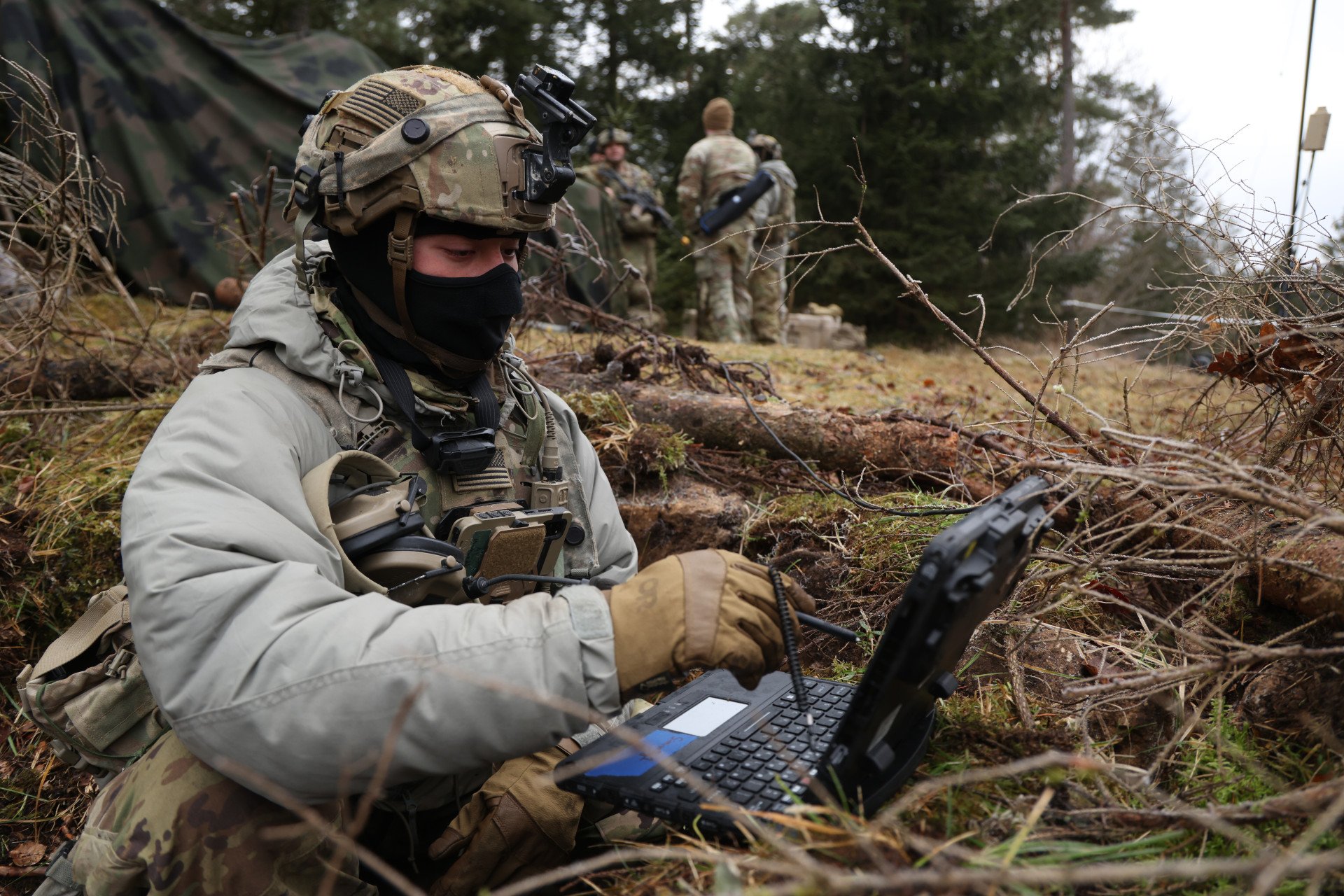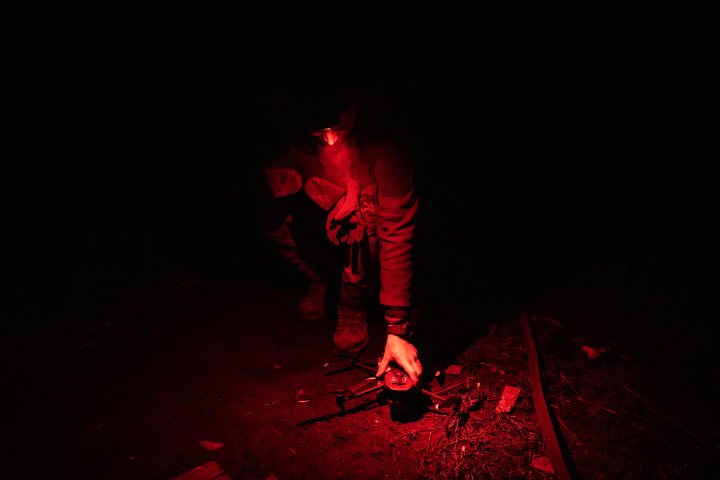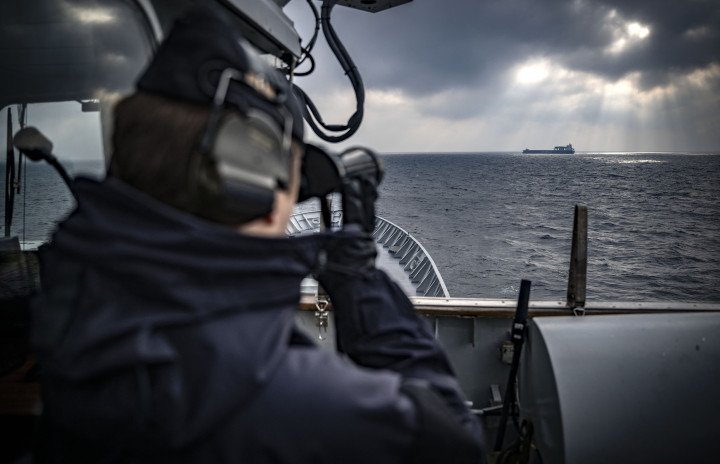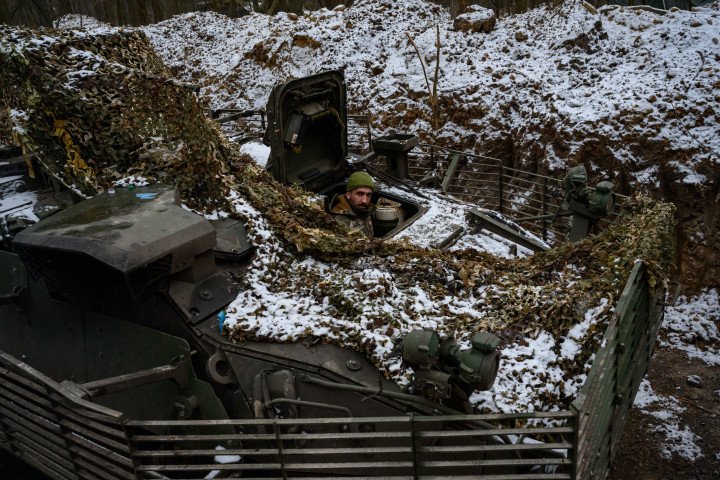- Category
- War in Ukraine
How Ukraine’s Battlefield Lessons Are Reshaping NATO’s Defense

Almost three years into Russia’s full-scale invasion of Ukraine and Vladimir Putin's constant saber-rattling against NATO countries, the alliance is slowly waking up to its most significant military challenge since the end of the Cold War. But which lessons have NATO armies learned from Ukraine’s decade-long fight for independence?
A massive blast shakes the ground, followed by another. The drone pilot, callsign Hoarse, doesn’t flinch. We’re in Pokrovsk, after all, and he’s used to it.
“So, do you think NATO can learn from Ukraine?”
Hoarse smiles a bit and, once it’s a bit quieter, finally answers the question. “I trained in France; it was good, but…” he pauses, lighting a cigarette.
“NATO countries can learn a lot from us in this regard—how the war is being fought, how it unfolds, and what means are being used,” he says before staring at the void of the underground tunnel we’re hiding in.
Lithuania and Estonia announced on January 26 that they pledged to meet 5 to 6% of their gross domestic product on defense, a first in NATO’s history and a positive response to U.S. President Donald Trump’s demand for allies to increase their spending, according to the Financial Times.
“We know our opponent, and I fully agree – our goal should be 5%,” Estonian Prime Minister Kristen Michal reportedly said, referring to the Kremlin, whose TV pundits regularly threaten to attack NATO by invading the Baltics and Poland.
NATO Secretary General Mark Rutte has also urged member states to prepare for war by increasing defense spending to 3.5% amid Russia’s war in Ukraine.
Russia’s full-scale invasion exposed the flaws in NATO countries’ military, “caught napping” in 2022, according to Nick Chaffey, CEO of defense company Northropp Grumman.
NATO countries can learn valuable lessons from Ukraine’s experience in fighting Russia, while some armies have already started integrating the realities of the war raging at the alliance’s eastern flank, from adapting weapons to an XXIst century trench war to military doctrine. The massive use of drones and high-intensity warfare compelled Western armies to entirely revise their doctrines and adapt weapons, especially with electronic warfare, in the face of Russia’s threat.
A protracted conflict “like the Russo-Ukrainian War compels military forces to adapt or to lose,” according to a paper written by military experts Charles McEnany & Colonel Daniel S. Roper for the Association of the U.S. Army (AUSA) published in October 2024.
This statement still holds true as Ukraine enters its third year of resistance against all odds—and a much larger power.
Drone war
For U.S. Army Chief of Staff General Randy George, the lesson is clear: “Employing simple, cheap tech faster is giving people a tactical edge.”
Drones have by far become the central fixture of this war. Ukraine has contracted 1.6 million drones in 2024 alone, with 1.3 million delivered to the frontline, including low-cost FPV drones, in a conflict that’s now synonymous with the deadly buzzing of UAVs on the zero line.
President Volodymyr Zelenskyy also announced that Ukraine “plans to produce 30,000 long-range attack drones in 2025,” a cheaper alternative to the hundreds of missiles Russia regularly launched on civilians in 2024.
“Everyone has evolved in the same direction,” Xavier Tytelman, former pilot and defense consultant, told United24 Media. “ The basic ammunition, the weapon that hurts the most, is the drone.”
Drones are ubiquitous on Ukraine’s battlefield. First-person-views holding a charge are cheap to produce with a price range of up to $500, and can destroy millions-worth tanks with an explosive device targeting the right flaw in the armor.

It also profoundly changed the dimensions of the war, adding a “battlefield transparency” now integrated into the French military, according to Général Vincent Breton, in charge of the country’s military doctrine.
“For example, with mini and micro drones, when the weather conditions are favorable, the slightest movement of the adversary is detected. It is, therefore extremely difficult to hide from them,” Breton explained.
The only countries that have tried to focus on drones are the UK and a few NATO allies, which agreed to supply 30,000 drones worth $55 million under the international Drone Capability Coalition.
“But it represents 3 days of consumption on the battlefield,” Tytelman said.
The French army only recently issued an order for 1,000 low-cost drones to be used in a large-scale military exercise.
“For the first time in the Western world, we're going to do an exercise in real conditions of a high-intensity war with drones everywhere, but it took us three years to put it in place,” he said.
-ff4186c0423a2f3242cf4f4460acd6d7.png)
Cost-efficient war
According to the AUSA paper, the U.S. Army may decide “to allocate investment away from more advanced platforms toward procuring large numbers of cheaper capabilities better suited to prolonged attritional warfare.”
In short, spending less to have more, summed up Michael Benhamou, founder and executive director of the think tank OPEWI – Europe's War Institute.
The war entered a form of economic stagnation mirroring the global economy, according to Benhamou, who pointed to the “low cost” direction of the war.
“We see with Ukraine that drones are cheap, that missiles that cost 20,000 dollars can destroy equipment that costs 30-40 million, and so it pulls down prices,” he said, referring to the U.S. canceling the Future Attack Reconnaissance Aircraft program aimed at developing a new multi-million worth helicopter.
It’s useless to build helicopters at 20 million, 30 million dollars per piece if these are shot down by missiles at 5000 bucks. The cost-opportunity ratio changed with Ukraine.
Michael Benhamou
Founder and director of OPEWI – Europe's War Institute
Instead, the U.S. Department of Defense plans to field thousands of autonomous systems across multiple domains with its “Replicator” system to “help a determined defender stop a larger aggressor from achieving its objectives, put fewer people in the line of fire, and be made, fielded and upgraded at the speed warfighters need without long maintenance tails.”
More troops, different training
NATO’s latest exercises, “Pikne” (Lightning) held in December in Estonia, showed an explicit integration of the lessons learned in Russia’s war against Ukraine, according to Tytelman, who was deployed on one of the boats used for the war simulation.
“It was an exercise simulating a high-intensity war like in Ukraine,” he said, referring to exercises held in Finland in November, the first of one of the latest NATO members.

Meanwhile, before Russia’s full-scale invasion, France’s armament program was oriented towards drone-free conflicts and, thus, not ready for that kind of war, especially when it came to training soldiers.
Battle experience also takes over the value of training to get better skills, according to Tytelman. When French ex-military signed for the Foreign Legion in 2022, “they were way better than the Russians.”
“Today, a commando marine (the equivalent of a Navy Seal) doesn’t know how to handle drones, avoid fire ammunition, or coordinate with UAVs.”
The Russian army now comprises over 1.5 million soldiers, with over 600,000 deployed in Ukraine. No NATO country, except the United States, has comparable troops.
Neighboring NATO members—Norway, Finland, Estonia, Lithuania, and Latvia—collectively maintain armed forces of fewer than 200,000 soldiers.
Ukraine’s army currently counts 880,000 soldiers against 600,000 Russian ones on the ground. But, the entire Ukrainian army is stretched thin across the country and its 1,000-plus-kilometer frontline.
As of January, France holds about 200,000 active personnel, as Poland is ramping up its forces to reach 300,000 personnel - still a far cry from the forces in presence on the ground in Ukraine.
Expanding volumes
Expert’s observations are clear-cut: regarding ammunition, the French Air Force would only last three days in a high-intensity conflict, according to a recent report by the French Institute of International Relations (IFRI).
Still, “after three days, the Russian army is wiped out,” assured Tytelman. “But we have to think about other conflicts too, such as the US and Greenland or Turkey versus Greece.”
Nevertheless, France and other NATO countries launched shell production lines strong enough to fit Ukraine’s current needs and streamline manufacturing at the speed of consumption on the battlefield to the ratio with Russians.
The problem of ammunition also raises the issue of mass production and the equipment’s quality, according to him.
“You look at a Stryiker against a Russian T-90M, you can see very well that the Stryker is superior, and it’s not even a tank,” he said.
Still, France only sent samples from its surplus to Ukraine, barely enough to keep the Russians at bay.
“We have the most modern weapons but the minimum number of helicopters, tanks, and armored vehicles,” he said.
“We don't have the mass to support it, only the crazy-advanced stuff that allows us not to die when we face jihadists,” Tytelman added. “We have the technological performance that will make the difference, but without the mass, which is the basis.”

An army at peace is subjected to a certain inertia, and it takes time for the defense industry to relaunch its production chains in countries far from the frontline, such as France.
While the Poles had already started to equip heavily, the French defense industry decided to do “European deals” that needed negotiations and system clarifications. The administrative burden means production chains might be ready in three years.
“But if we wait until 2028 to start producing, we'll be invaded, that's for sure,” the experts said.
At the same time, the Russia-Iran-North Korea-Iran axis is expanding its weapons’ production capacity, according to Benhamou, reaching a production ratio almost equal to Western allies and developing their technological capacities, including missiles, radars, drones, or AI.
“Our equipment is way more vulnerable, and our defense industry needs to adapt,” he said, recalling the defense industry EuroSatory held in Paris in 2024.
“I was worried because we produce new tanks and artillery pieces, but they’re extremely costly,” he said.
“Our leaders grew up in years where they thought the war would be like Star Wars or Top Gun, but instead it’s Sicario and Platoon. Today’s war is full of mud, attrition, and destruction. They need to understand it.”
Michael Benhamou
Founder and director of OPEWI – Europe's War Institute


-f88628fa403b11af0b72ec7b062ce954.jpeg)
-b63fc610dd4af1b737643522d6baf184.jpg)


-29a1a43aba23f9bb779a1ac8b98d2121.jpeg)

-24deccd511006ba79cfc4d798c6c2ef5.jpeg)